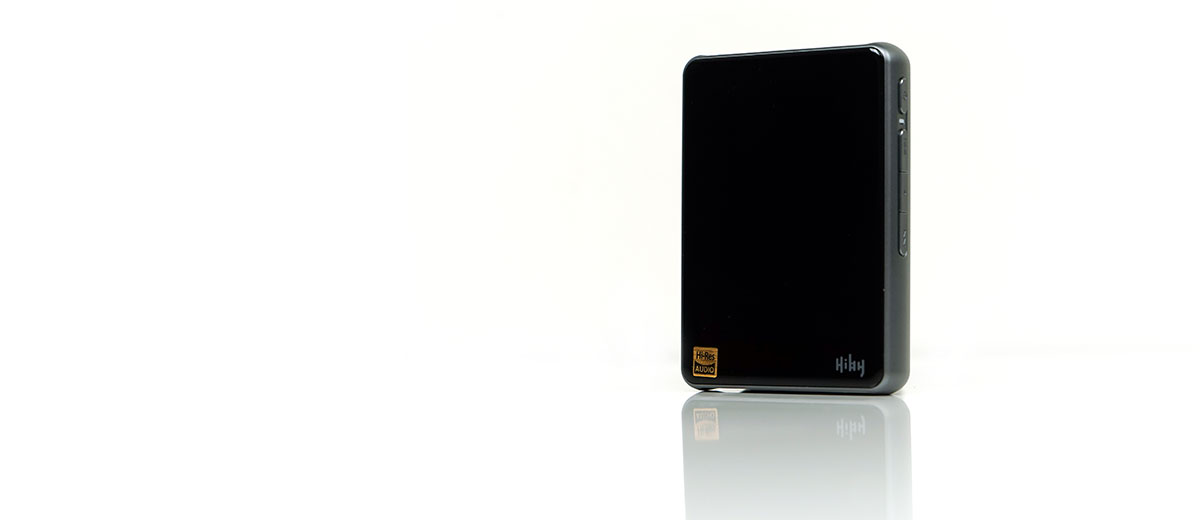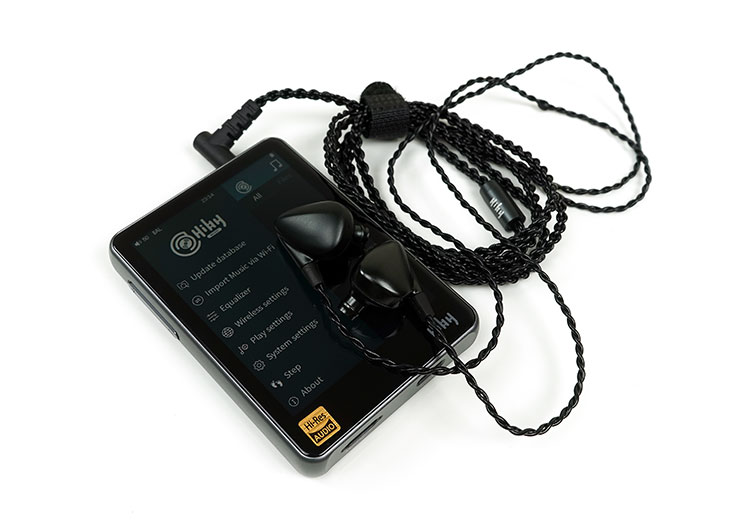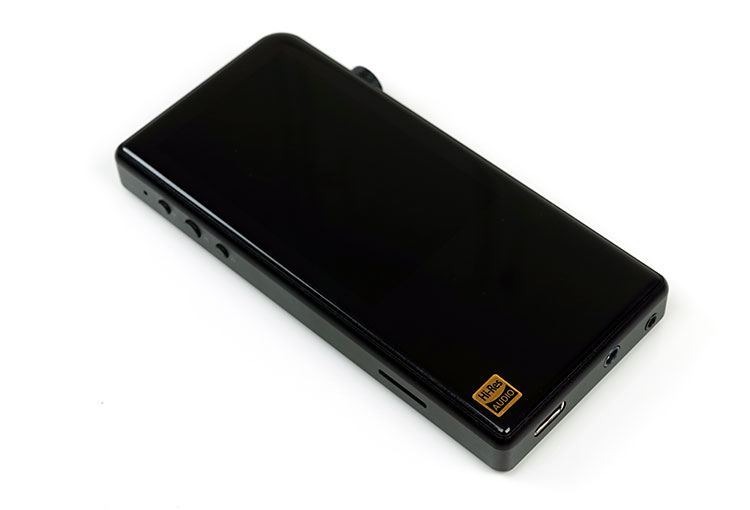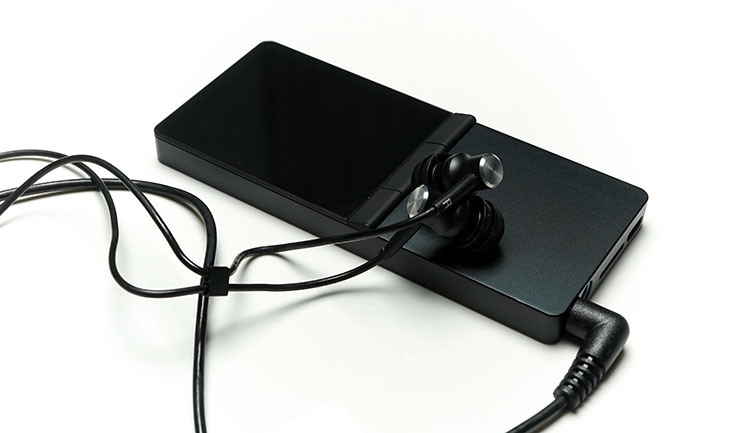Sound Impressions
Tonality & Presentation
The R3 delivers a musical and fun sounding tonality with a clean and clear presentation and a decent level of low-end warmth. Compared to other Sabre infused DAPs, the R3 inherits a little of the R6 bass weight and PRaT so it is not as linear or flat sounding using IEMS sub-500Hz.
There you can find a fuller response and a little more sub-bass presence than say the N5ii which, to my ears, is a little lighter and more restrained sounding. It also delivers a slightly better body than the Shanling M3s which also tends to sound a little thinner with more top-end emphasis than the R3.
Detail
Beyond that, the R3 delivers excellent levels of detail, above average instrumental separation and a timbre with a natural to slightly warm harmonic balance, especially in the lower mids. The ES9028Q2M also rarely exhibits the same level of treble glare as the older ES9018K2M chipsets so generally, it sounds much smoother in its vocals presence and top-end performance.
You will not find any X3iii type veil to the vocal performance of the R3 either though the positioning is a little more neutral compared to the bass and treble energy of the R3.
I want to emphasize I do not find the top-end in any way forced or harsh sounding to achieve a perceptible presence beyond 2-4k but it is slightly brighter and more energetic sounding than the R6 performance within a similar range.
I sort of expected that given the better setup on the R6, however, the difference is more nuanced than night and day. The R6 simply sounds the more natural of the two for percussion timbre and harmonic balance.
Soundstage
Staging wise the R3 has excellent depth and width with decent headroom and air in top-end. It is not quite as airy as the M3s or the R6 but nothing shelved down. There is a little forwardness in the upper mids to lower treble and again a bit more low-end presence in its presentation but it in no way affects the mids performance which is open sounding and delivering excellent width and imaging.
Single-Ended Versus Balanced
Balanced will deliver about 5 steps more volume (35 versus 40 steps using the Andromeda in low gain) and more output power than the single-ended output. Overall the tonal difference remains largely unchanged with perhaps a little more snap and definition in its bass response and slightly better instrumental separation.
You will most likely benefit from the balanced output with slightly more inefficient or higher ohm rated IEMs. Sensitive IEMs such as the Andromeda do not deliver any transformational performances using the balanced output.
Matchability
Efficiency
The R3’s output rating at 56mW and 112mW into 32Ω (single-ended and balanced) is not the strongest in the market at this price point. In fact, compared to some of the competition it is the lowest-rated.
DAPs such as the X3iii start at 160mW single-ended into 32Ω and the more budget-orientated DAPs from Cayin and Shanling (N3 and M2s) have a rated 130mW into 32Ω. Only the AP60 II from Hidizs have similar or lower output ratings.
However, you have to balance that with the excellent SNR (4-8dB superior to all mentioned DAPs) and THD+N numbers from the R3. You also have to factor in the sub-1Ω output impedance on both jacks to understand that the R3 is very much geared for excellent performance with efficient IEMs. It is with IEMs that the R3 really shines and plays drives most IEMs (Bar RHA CL1) with reasonable ease.
Noise/Impedance
The noise floor on the R3 is very low indeed. In fact, with the Andromeda, I could only pick up the faintest of noise floors with the R3. All other IEMs played dead quiet with a satisfying black background. IEMs such as the Hum Pristine R, iBasso IT03, Noble’s Savanna and Sage all produced a very quiet performance.
Impedance is not a factor with the R3. Those who hesitated on the R6 due to its 10Ω output impedance will find no low-z skew with sensitive IEMs using the R3. It reproduces accurately so there is no need for impedance adapters.
Synergy
IEMs
With the musical and energetic signature, the R3 actually pairs pretty well with a wide range of my IEMs outside of the most power-hungry ones such as the CL750 and Cl1 from RHA. If I have to declare a personal preference I would pick a neutral to natural-sounding IEM that will not overemphasize any inherent warmth in the R3 or exaggerate any treble energy. However, I will acknowledge with budget entry colored IEMs the R3 sounded like a lot of fun.
As an example, I found the synergy with higher-end IEMs such as the Hum Pristine R to be excellent, smooth and very nicely balanced with next to no noise. However, v-shaped IEMs such as the excellent budget level IT01 also sounded punchy and vibrant when paired with the R3.
The Noble Savanna’s more neutral presentation didn’t quite gel as well with the R3 for regular rock and vocals but sounded great with modern R’n’B. Modern consumer music seems to be the forte of the R3.
Headphones
Outside of efficient IEMs, easy to drive headphones such as the Meze 99 Classic and Neo, the Sony MA900 and to a lesser extent, the Audeze SINE also sounded good when paired with the R3.
My personal preference was to use the 99 Neo with the R3 for dance and R’n’B genres due to the more aggressive bass from this pairing and keep the 99 Classic for more traditional rock and mid-centric music. The SINE will scale with more powerful DAPs and amp stages but it sounded ok to me on the R3. Quite smooth actually with the energetic lower treble bringing some life out of the darker top end of the SINE.
Select Comparisons
Shanling M3s
$279
Technical
The M3s is Shanling’s mid-range DAP and it also uses a version of the HiBy Music OS as its core software platform. The M3s is a non-touch physical control only DAP so all of the navigation and confirmation is done through the use of buttons and a volume dial to the left and right. The software platform is a little more primitive than the R3 but fairly stable. It does not have WiFi or any streaming services but it does have Bluetooth, HiByLink, and bi-directional services.
Like the R3, the M3s has no onboard memory and accepts microSD officially up to 256GB in a single slot. It also has a balanced and unbalanced output capability as well as line out whereas the R3 uses its USB-C port for digital outputs and has no dedicated line-out. The M3s also has a USB-C output and will operate in USB-DAC and OTG digital audio mode as well as accepting OTG USB Storage expansion.
The M3s also has more power at 130mW into 32Ω single-ended and 230mW into 32Ω balanced. Both are very quiet performers with low noise levels so they are ideally suited to IEMs and efficient headphones.
Performance
The M3s tonally is a bit cleaner with slightly less body and not as much low-end warmth as the R3. This is a more neutral and linear presentation with less bass weight and aggression compared to the R3. The R3 also has slightly more vocal and lower-midrange instrumental presence whereas the M3s tends to sound a little thinner and cleaner.
The M3s is not brittle by the way, it is actually quite refined sound. Rather its emphasis is more mids to treble whereas the R3 tends to have a bass, vocal and lower treble emphasis in that order.
Despite the tuning bias of the M3s, I would not call the M3s a bright signature. Sure it has sparkle and good extension but it is quite smooth sounding to my ears but it is a tiny bit further forward sounding than the R3. This includes its upper treble which is a little airier and more open sounding.
Hifiman Supermini
$399 ($199 as of March 2018)
Technical
The Supermini is a slimmer volumetrically smaller DAP than the R3 with a floating price point these days between $199 and $399. Its own OS is far more primitive than the touch-capable HiBy Music OS with no connectivity functions such as Bluetooth and WiFi. All functionality is controlled through a series of slightly awkward physical button placement on its slimline chassis. Like the R3 it has no onboard memory requiring a microSD card and a FAT formatted one at that.
It does, however, have a much longer battery life at up to 20 hours and its power specs are much higher at 320mW into 32Ω compared to the 112mW into 32Ω of the R3 balanced. The Supermini is primarily pitched to handle much higher-powered headphones and IEMs than the R3.
The DAC inside the Supermini is not as advanced as the R3 in terms of decoding capability with a maximum output of DSD64 and 24BIT/192k PCM compared with the R3’s DSD256 and 32BIT/394k PCM. Its THD-N and SNR numbers are not as good as the R3’s numbers at 0.04% and 102dB respectively.
Performance
This is a very competitive matchup though both have a different tonal bias. The sound quality of the Supermini should not be underestimated even if its physical appearance is a bit limp in comparison to the R3. I will remark though you will not hear the best out of the Supermini with efficient IEMs. The noise floor is simply too high and the R3 is much better suited in this niche. The Supermini pulls away on balanced with more demanding headphones with more output power and better driving capability.
Efficient IEMs
On regular or low-efficiency IEMs both have good noise floors with the R3 just have that more aggressive and weighted low-end compared to the more controlled sounding Supermini. The Supermini does have a very slight mid-bass bump injecting a little warmth but it is not as much as the R3. the R3 is the better choice for low-end power. That theme continues into the mids with the R3 showing slightly better body and the Hifiman aiming for something more flowing and natural in its timbre.
The supermini treble performance is really excellent and if the R3 has the edge in low-end the Supermini has the edge in the high end. This is very articulate with plenty of sparkle and better air than the R3. The R3 does a great job also but just not quite the same headroom and openness as the Supermini.
FiiO X3 Mark III
$199.99
Technical
The X3 Mark III is FiiO’s latest iteration of its X3 line priced at $199. It comes with its own Linux in-house software on a slightly slower Ingencics processor and is non-touch based. The X3iii is much slower than the R3 and FiiO do have some way to go before their own OS is really up to speed with HiBy Music’s own OS. It does not have WiFi but it does have Bluetooth though it does not have the aptX protocol which the R3 has.
The X3iii comes loaded with a dual TI’s PCM5242 chipset for its DAC implementation. However, the decoding rates are a little disappointing compared to the R3 with a max DSD64 and 24BIT/192k PCM. I presume this is more of a limitation of the processor and software setup as the TI chipset can decode higher if required.
Performance numbers on signal output vary. The X3iii has more power in both single-ended and balanced. However, the R3 benefits from much better SNR numbers by up to 4-5dB (SNR) and a better dynamic range performance from the ES9028Q2M by up to 10dB.
Performance
First up noise. The noise level on the X3 Mark II with sensitive IEMs is higher than the R3. The X3iii will exhibit moderate levels of background hiss with IEMs such as Shure SE846 and the Andromeda. For higher ohm rated IEMs and less efficient ones both will be silent with good black backgrounds.
Tonally both are warm to natural-sounding and fairly musical however the R3 is more aggressive in its presentation than the X3iii’s laid-back approach. The X3iii has warmth but its sub-bass presence is looser with less presence. That means a punchier and more weighted R3 low-end, thicker lower-midrange and slightly meatier instrumental timbre.
Vocals are also slightly further forward on the R3 and “bigger sounding” than the X3iii. The X3iii vocals and upper mids are positioned a little further back than the R3 and have slightly less impact and focus. Lower-treble on the X3iii is also more laid back with less slightly less energy though both seem to have similar levels of presence and detail in the final octave.
Our Verdict
Potential
At such an early stage the R3 shows plenty of promise and a very rewarding sound signature. It is by far the most advanced non-Android based ‘entry-to-mid-fi’ DAP at this price point. It also allows HiBy Music to show off their technical ability in how they have expanded the OS into a touch-capable connected OS that can run really well on a fairly modest processor.
Aesthetics
It is also perhaps one of the nicest looking DAPs sub $500 and really bucks the elongated rectangular or traditional design trend of many of its competitors. Perhaps only Shanling are thinking in the same direction with their new S series designs such as the M1s.
Performance
In terms of sound quality well its slightly musical and more aggressive “fun” presentation is very enjoyable to listen to with just about any IEM you can throw at it. It may not have the power to really get to grips with most headphones but its low noise floor, excellent volume micro-control make it pitch-perfect for efficient gear. And no impedance monkey business! Bliss.
What Is Missing?
Of course, it is early days yet and certain things are missing either because it’s beta firmware or something I wish it had. If there are screen protectors and protective cases in the final product that be a good start as the R3 is rather naked without them. It is also a shame there is no dedicated line-out rather than pass through the internal amp at a fixed 1.1V.
On the OS side, TIDAL integration is good but a few more category features from their main software platform such as TIDAL Rising might enhance the experience. The ‘slide up’ toolbar on the playback screen does not really add much to the experience. In fact, it directly duplicates the layer below it. I also feel that the physical buttons are more accurate and intuitive and pretty much do the same job.
Now and Future
I may change the score based on the final firmware release to reflect any new features and some bug fixes. However, given the existing score on page 1 that is only going to be a positive value-adding experience because the R3 is already one heck of a bang-for-buck product. Right now, this is the best HiBy Music OS experience to date on any platform with a highly competitive and mature sound quality to match.
R3 Technical Specifications
To read up on the R3 specifications click here.







